What Is IPM?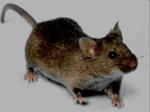
Integrated pest management (IPM) uses information about the pest in order to choose methods of control that are safest and most effective. IPM methods include pest prevention, exclusion, and nonchemical tools first. If chemical pesticides are needed, products are chosen that pose the least risk to human health. With IPM, you start by asking, “Why is this pest here?” and try to remove the conditions allowing the pest to enter and live. This approach solves pest problems rather than just treating the symptoms. It also reduces the need to use pesticides repeatedly.
Why Use IPM to Control Mice?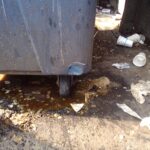
- More likely to give long-term control
- Less hazardous to human health
- Less risk to non-target organisms
- More cost effective
- More site appropriate
Steps to Managing Mice
1: Pest Identification
Find out what kind of pest you have to make sure it is a mouse or a rat, if possible. Mice that infest houses are typically 5–8 inches long, including a long, hairless tail. They have large ears and their droppings are pointed, about the size of a grain of rice.
Rats are much larger, 13–18 inches in length, including a short tail. Their droppings are blunt, about the size of a small raisin.
2: Prevention Keep Them Out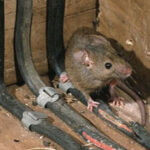
- Look at the walls, ceilings, floors, and around pipes and wires on the inside of the house for holes and other points of entry. These openings may have a dirty or oily marking around them. A mouse can fit through a hole about the size of a dime (or a pencil), and a rat can fit through a hole about the size of a quarter.
- Look outside the house to determine how they may have gotten in, especially around pipes and wires, and at the foundation of the house.
- If possible, seal off/plug outdoor holes with rodent-proof materials (copper mesh, hardware cloth, and silicone sealant).
- Install door sweeps under doors. Many mice come in the same way you do—through the doorway.
Eliminate Their Needs.
All pests look for food, water, and shelter. It is very important to remove access to these items to prevent an infestation.
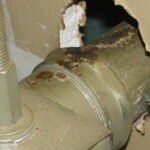 Clean up crumbs and spills, and store food (including pet food) up off the floor and in sealed, hard containers with tight-fitting lids.
Clean up crumbs and spills, and store food (including pet food) up off the floor and in sealed, hard containers with tight-fitting lids.- Fix dripping faucets and leaking pipes.
- Keep living areas clean and uncluttered.
- Keep yards and vacant lots maintained by mowing and utilizing regular trash pickup.
- Share information with neighbors. Mice do not stay in one place.
Controlling Mice Safely.
The safest traps for catching mice in the home are snap traps. These traps kill the mouse quickly and prevent you from having to touch the mouse when disposing of it.
- The snapping side of the trap should be set toward the wall and baited with peanut butter. Mice tend to run along the wall, so this increases your chances of catching them.
- Set mouse traps in those areas where most of the mice droppings are found, but keep traps well-hidden and out of reach of children. Since mice are typically awake at night, traps can also be put away during the day to prevent accidents from happening to children or pets.
- Glue boards are not recommended for rodent control and should be used with caution. They are nontoxic, but they do not kill the mouse leaving you to deal with a live mouse. You may be bitten, and the mouse can make loud noises and suffer while on the trap.
- Once mice are eliminated, wear rubber, latex, or vinyl gloves to dispose of them. Place the dead mouse in a bag and throw it away, and then clean the area. Cleaning up mouse droppings should be done carefully due to disease and triggers for asthma. Do not stir up dust by sweeping or vacuuming up droppings, urine, or nesting materials.
- Wear rubber, latex, or vinyl gloves when cleaning urine and droppings.
- Spray the urine and droppings with a disinfectant or a mixture of bleach and water and let soak five minutes. The recommended concentration of bleach solution is one-part bleach to ten parts water. When using a commercial disinfectant, follow the manufacturer’s instructions on the label for dilution and disinfection time.
- Use a paper towel to pick up the urine and droppings, and dispose in the garbage.
- After the rodent droppings and urine have been removed, disinfect items that might have been contaminated by rodents or their urine and droppings.
- Clean and disinfect the whole area afterward.
- Remove and dispose of gloves and wash hands with soap and water.
Using Pesticides on Mice.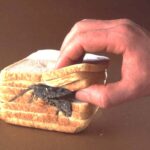
Mouse and rat baits are called rodenticides. The EPA now requires that such baits be in larger, solid blocks and enclosed in a secured, tamper-resistant bait station. Like all pesticides, these products must be used carefully, according to label instructions.
- Limit the use of rodenticides inside homes. Besides increased risks to children and pets, rodents die inside walls and smell bad, attracting insect pests.
- Do not use a product if it does not have an EPA registration number or directions on the package. It is probably illegal and even more dangerous to children and pets.
- Avoid using foggers and sprays. These are designed for insects and do not affect rodents.
If you experience an influx of mice around your home, call the experts at Universal Pest Services (610)449-0740 and schedule a free inspection today!